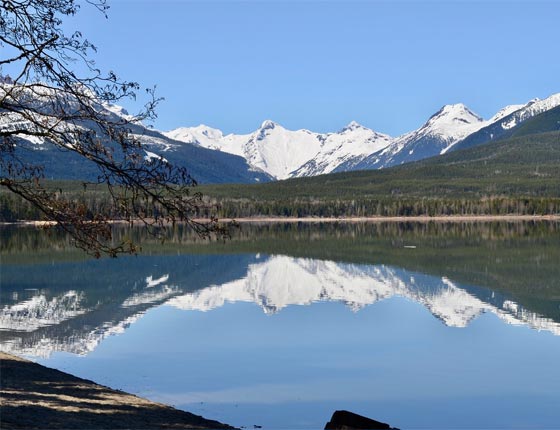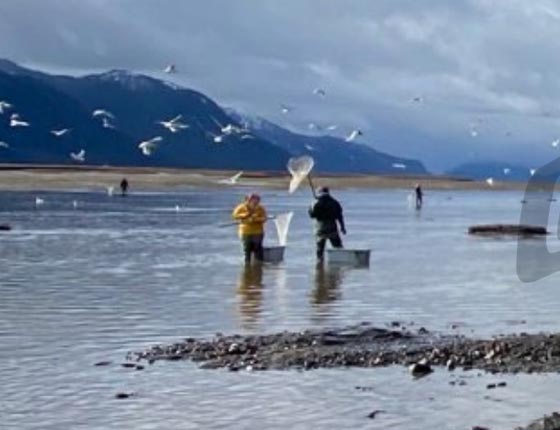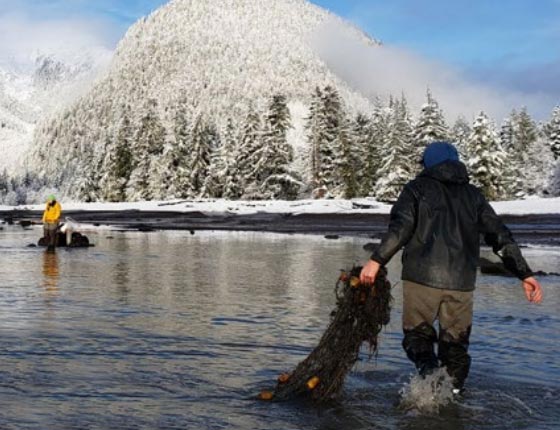Projects
- The NCSFNSS coordinates, supports, and implements multiple projects. Through both the Marine Planning and Fisheries Programs, the NCSFNSS staff work towards increasing our understanding of the North Coast’s social and biological systems and building capacity within the communities to continue with monitoring and the conservation of marine resources.

Participation and Engagement in Salmon Management and Science
Salmon is of critical importance to the North Coast-Skeena First Nations, and for that reason, salmon is a focal point for the NCSFNSS fisheries program. Our office participates each year in the development of the North Coast Salmon Integrated Fisheries Management Plan (IFMP) to ensure our communities’ concerns are voiced. We track season forecasts and management decisions prior to the start of the fishing season as well as in-season. Our office also participates in coast-wide initiatives, such as the Commercial Salmon Allocation Framework (CSAF) reform process to advocate for equitable economic access for our communities. We are involved in Skeena Salmon projects initiated by the Pacific Salmon Foundation, such as Skeena salmon benchmark analysis and watershed habitat assessment. During the salmon season, we conduct science projects such as fish health sampling and stock assessments.
Habitat Restoration – Kitsumkalum Lake Spawning Channel Cover Structures
The Kitsumkalum Lake Spawning Channel Cover Structures pilot project was completed in August of 2019. Two platform structures were installed and monitored for one year to assess the effectiveness of the design at this location in the spawning channel. A second year of observations were collected over the course of 2020 on temperature and structural integrity.
Two Temperature loggers were deployed for a second year following the installation of the cover structures. One logger was secured under a cover structure with one control area with similar habitat features and depth. Data loggers were retrieved in 2021.
The stability of the structures was assessed at each site visit to the spawning channel and observations recorded. Structures were visited multiple times during high water and flood events during 2020 and did not appear to be compromised during these conditions


Skeena Eulachon catch monitoring survey
Skeena eulachon is a fish of high cultural and food value to the North Coast-Skeena First Nations. NCSFNSS member Nations strive to better understand eulachon life history and ensure a sustainable food fishery. NCSFNSS coordinates a catch monitoring survey of the eulachon food fishery on the lower Skeena River to collect information on the harvest methods, timing, locations and amounts caught. The survey also monitors predation levels (i.e. seagulls, eagles, seals and sea lions) and river and weather conditions throughout the eulachon run. Bio-samples are taken of harvested eulachon to track fish size and sex ratio throughout the run
Ecstall chum stock assessment
The Ecstall River is considered the largest chum spawning system in the Skeena watershed and has been identified as a priority system for gaining an accurate count, given that Skeena Chum is a stock of concern. In the past NCSFNSS conducted stock assessment field work through a sub-contractor in the upper reaches of the Ecstall river where Chum spawn, with the objective of finding the most reliable and consistent method of counting for Ecstall Chum.


Community field project initiative
The NCSFNSS provides technical support to its member Nations in carrying out field projects selected by the communities. The NCSFNSS staff assist with the design, field work, analysis and reporting of projects.
Community Marine Use Planning Implementation Agreements
The member Nations of the NCSFNSS are implementing components of their Marine Use Plans through Community Marine Use Planning Implementation Agreements; these are signed between the NCSFNSS and each Nation. The agreements contain provisions whereby financial resources are made available to the Nations in order to carry out specific duties identified in a detailed work plan developed jointly by the NCSFNSS and the Community Marine Use Planning Coordinators. Staff at the NCSFNSS supports the Nations’ work planning through the development of communications materials, through co-leading committee meetings, and through project design and methodology development.


MaPP Implementation Agreements
MaPP partners are jointly working on the development of a Trust structure that will manage funds for MaPP implementation. Implementation support comes from both the public and private sectors and a comprehensive work plan will be agreed upon by all partners involved in the process. Implementation funding will provide opportunities for the member and partner Nations of the NCSFNSS to implement priority issues and marine resource initiatives at both the community and regional level.
